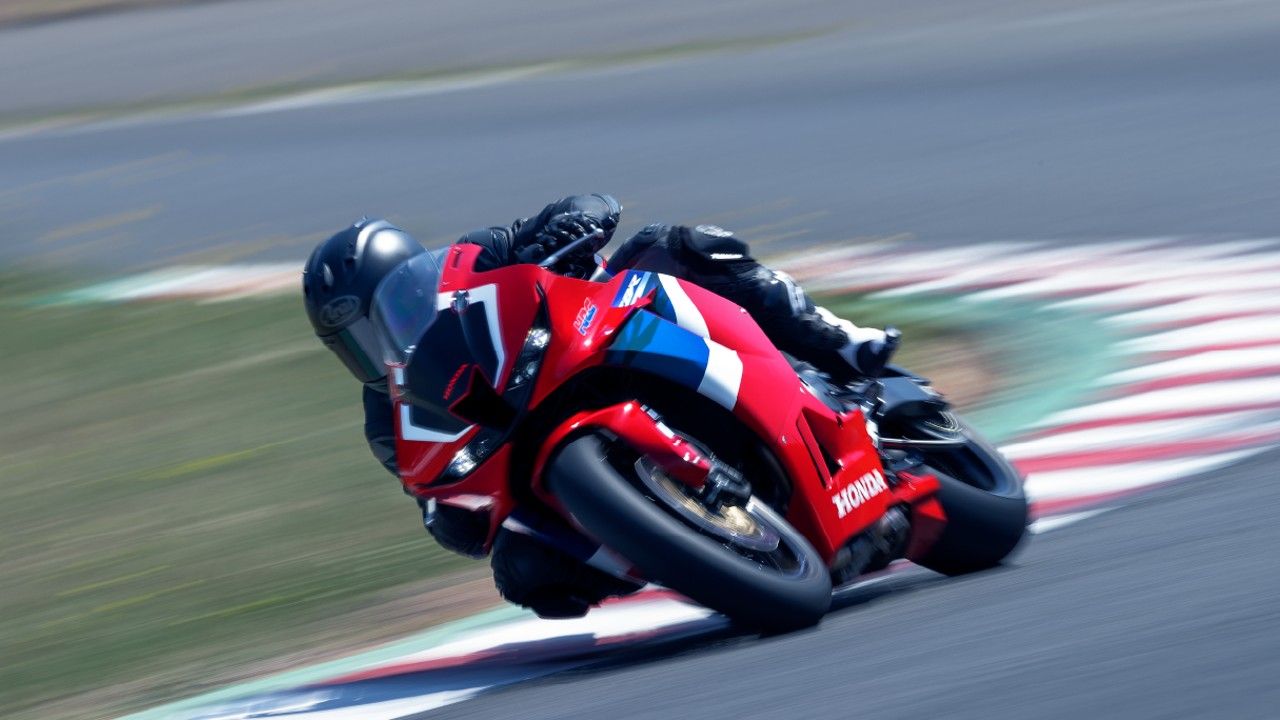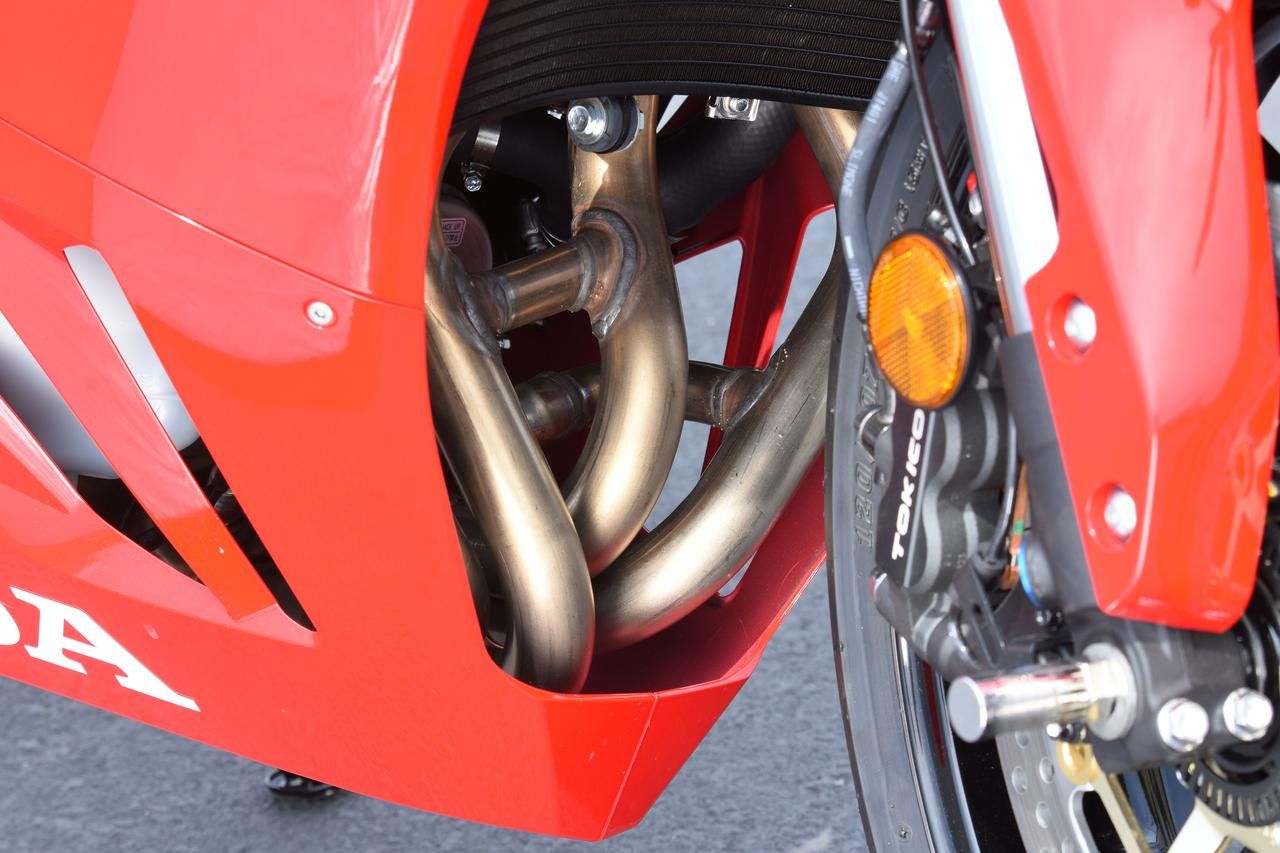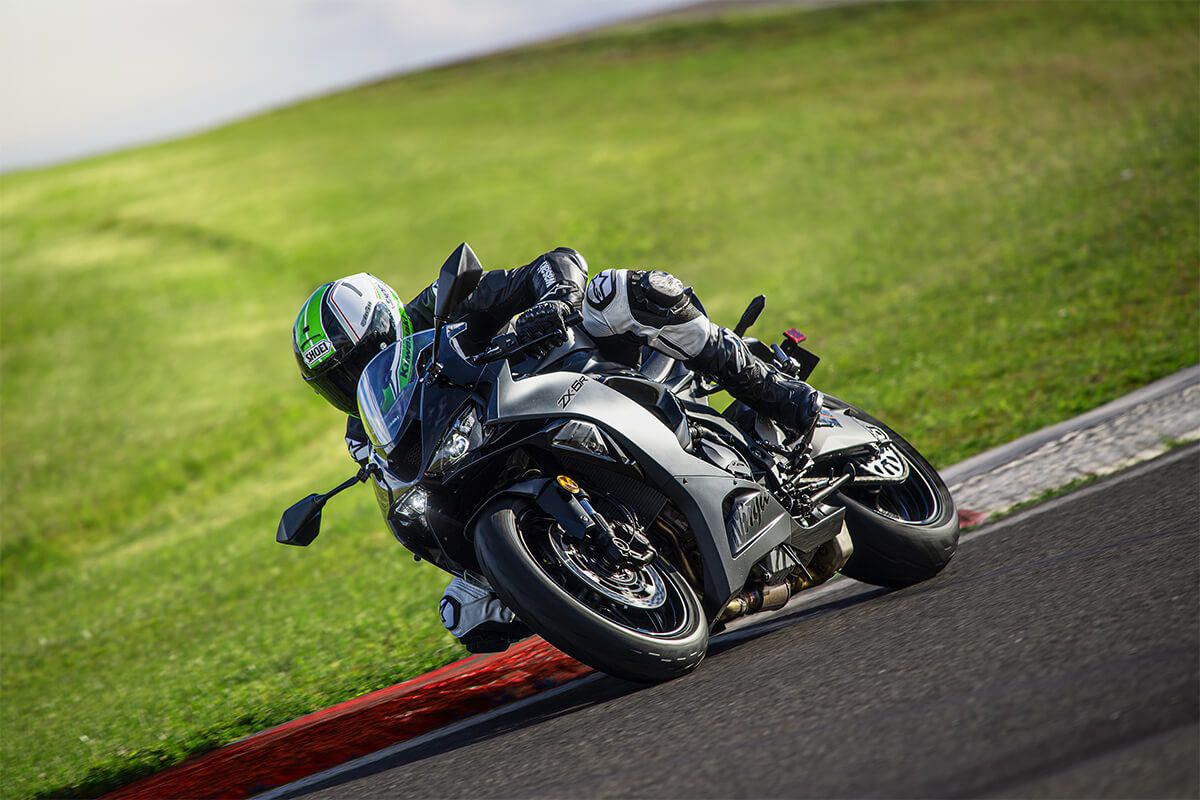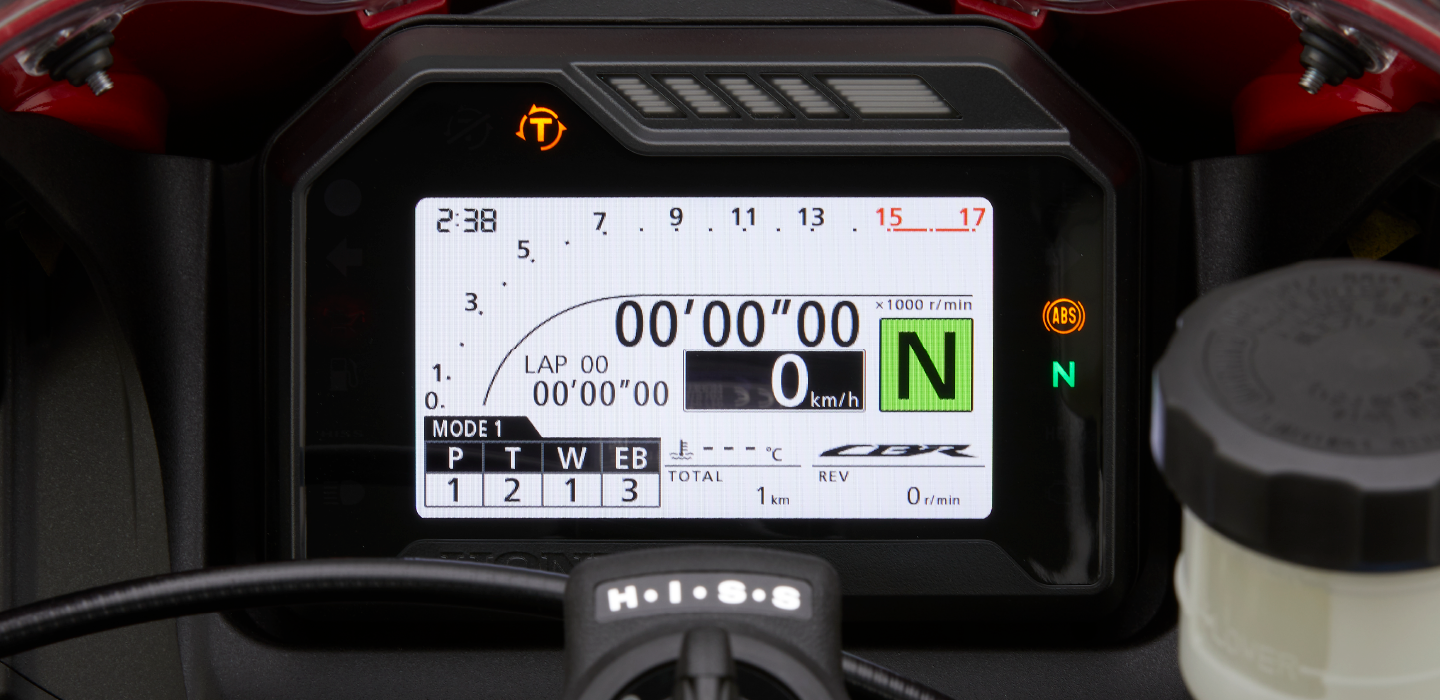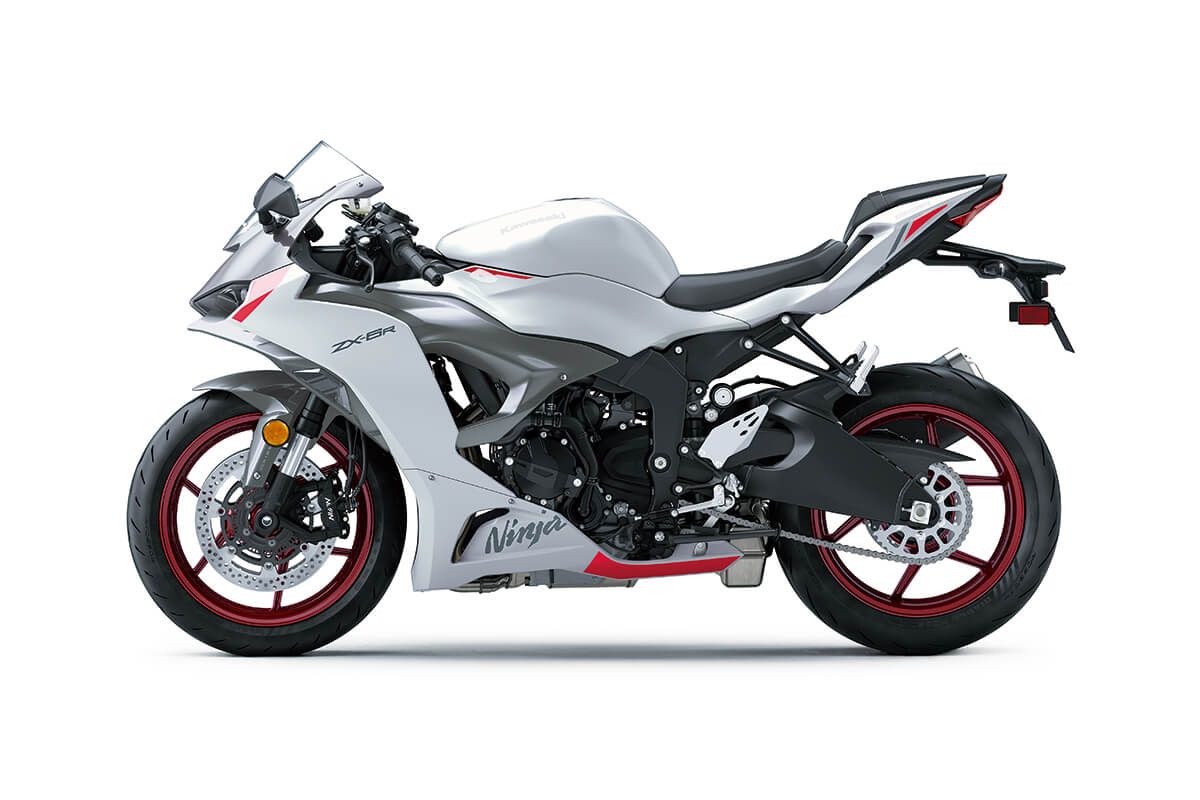At a time when all of its contemporaries have abandoned the 600cc class, Kawasaki dropped a bomb for the upcoming model year. It overhauled the much-popular Ninja ZX-6R, giving us the ONLY Euro-5 compliant 600cc screamer of late. Updates also included a new design, improved electronics, and better features, all of which made the supersport its best self yet.
Now, the 6R might be an unmatched prospect in America. But back in Japan, Honda has an answer–the latest generation CBR600RR. It matches up to the ZX-6R in almost all aspects and even meets new Japanese emission norms (identical to Euro 5). So we thought it’d be a good idea to compare them side-by-side and here’s the result.
2024 Honda CBR600RR vs Kawasaki Ninja ZX-6R - Performance
The CBR600 and ZX-6R are two true-blue supersports. So an inline-four engine comes standard on the two, complete with a sky-high redline and screaming exhaust note. These mills are not for everyday use and instead focus on giving you proper superbike-like thrills. That said, the differences are quite notable.
The Ninja ZX-6R Has More Power Than The CBR600RR
The ZX-6R’s Euro-5 compliance comes at the cost of a drop in peak power. But it still promises three more horsepower than the CBR. Same goes for the torque output, as the Kawasaki has three pound-feet extra. Credit here goes to the Ninja’s extra 36cc, bigger stroke, and higher compression ratio.
The Ninja ZX-6R Should Be More Tractable Too
To make matters worse, all of Kawasaki’s horsepower and torque kick in way earlier than the CBR. The difference is as big as 1,000 RPM for the former, so there’s no denying the Ninja will pull harder off the line. The CBR does, however, claw back some points with a better-claimed efficiency and lighter curb weight. Refer to the table below for the exact numbers.
| Specification | Honda CBR600RR | Kawasaki Ninja ZX-6R |
| Engine | 599cc, inline-four | 636cc, inline-four |
| Horsepower | 119 horsepower (at 14,000 RPM) | 122 horsepower (at 13,000 RPM) |
| Torque | 47 pound-feet (at 11,500 RPM) | 50 pound-feet (at 10,800 RPM) |
| Transmission | Six-speed | Six-speed |
| Weight | 427 pounds | 436 pounds |
| Claimed efficiency | 40.22mpg | 37mpg |
2024 Honda CBR600RR vs Kawasaki Ninja ZX-6R - Underpinnings And Dimensions
From afar, the two motorcycles have many similarities here. Upside-down forks, monoshock, 17-inch alloys, and disc brake sizes are all shared between the two. So both packages will offer sharp riding dynamics perfect for the racetrack, road, or your local twisties. But dive deeper, and you’d see some crucial differences.
The CBR600RR Is More Accessible Than The Ninja ZX-6R
Yes, you read that right. The 600RR not only has a lower seat height but also a shorter wheelbase than the 6R. Bring in its lower weight, and you’re looking at a more accessible motorcycle for riders of all statures. Plus, the extra tank capacity and efficiency mean more ride time, fewer breaks.
The only ‘pro’ for the 6R here is its higher ground clearance. But the difference is so minor, we don’t think it’ll be anywhere near noticeable for you. So a clear win for the CBR.
| Specification | Honda CBR600RR | Kawasaki Ninja ZX-6R |
| Front suspension | 41 mm Showa Big Piston fork | 41 mm Showa Big Piston fork |
| Rear suspension | Monoshock | Monoshock |
| Wheel size | 17-inch (F/R) | 17-inch (F/R) |
| Front brake | 2x 310 mm disc | 2x 310 mm disc |
| Rear brake | Single 220 mm disc | Single 220 mm disc |
| Seat height | 32.2 inches | 32.6 inches |
| Ground clearance | 4.9 inches | 5.11 inches |
| Wheelbase | 54.1 inches | 55.1 inches |
| Tank capacity | 4.7 gallon | 4.49 gallon |
2024 Honda CBR600RR vs Kawasaki Ninja ZX-6R - Features
The supersport class has never focused on features. They’ve remained simple and unfiltered, which is one of their USPs. But in 2024, the CBR and Ninja are loaded with modern tidbits, such as all-LED lights, TFT instrumentation, and electronic rider aids.
The CBR600RR Promises More Electronics Than The Ninja ZX-6R
The Honda takes the cake here. It gives you access to a bigger TFT and more electronic adjustability (similar to the CBR1000RR-R) than the Ninja. Plus, you also have an electronic steering damper, a variety of display modes, and changeable meter backgrounds, unlike the 6R. That said, the Ninja has phone connectivity, which the CBR doesn’t.
The CBR600RR Looks Sharper Too
The CBR600RR also comes out as the better-looking motorcycle between the two. An under-tail exhaust, aerodynamic wings, and sleek bodywork create a charming aesthetic the 6R simply can’t match. Bonus points for the triple-tone HRC livery. Design is subjective, though, so feel free to disagree in the comments below.
| Feature | Honda CBR600RR | Kawasaki Ninja ZX-6R |
| TFT instrumentation | Yes | Yes |
| Traction control | Yes | Yes |
| Ride modes | Yes | Yes |
| Engine brake control | Yes | No |
| Power modes | Yes | Yes |
| Steering damper | Yes | No |
| Quickshifter | Yes | Yes |
| Smartphone connectivity | No | Yes |
2024 Honda CBR600RR vs Kawasaki Ninja ZX-6R - Final Thoughts
Considering everything, there’s no denying the CBR600RR deserves a place in Honda’s international lineup. It could do wonders for the brand in America, Europe, and Britain, especially now that the 6R is here to stay. Sadly, however, the Japanese giant doesn’t seem too keen on the matter and the chances of you seeing it in your local dealership are rather slim. So if you’re in the market for a supersport, the $11,299 Ninja ZX-6R is still your best bet. You’re anyway getting more power and similar componentry, so you won’t miss out on much.

